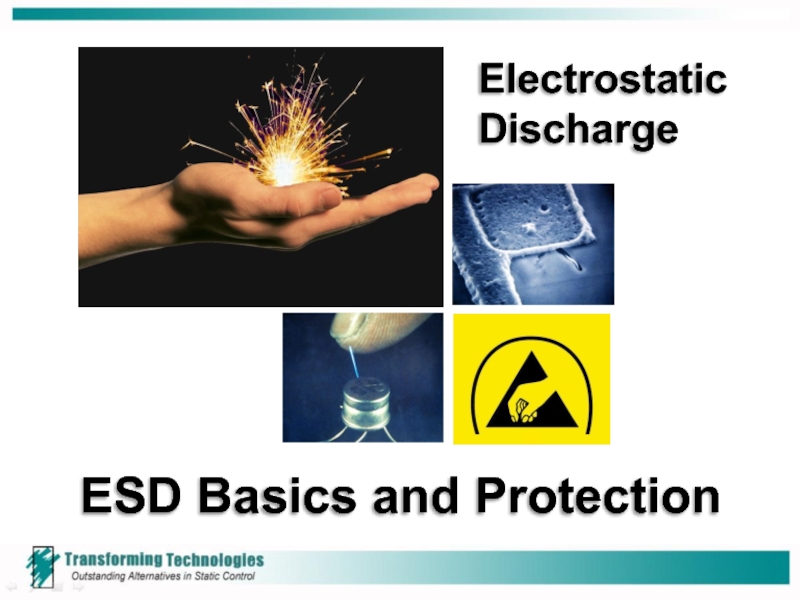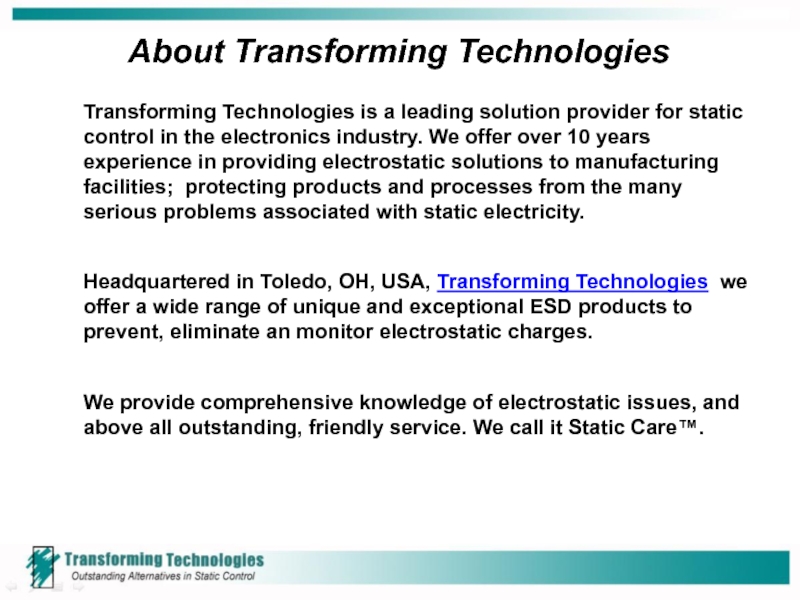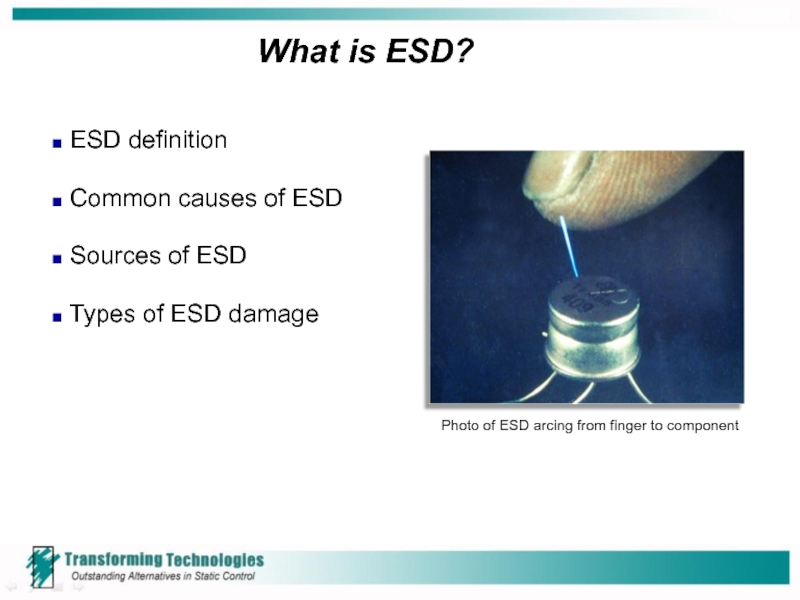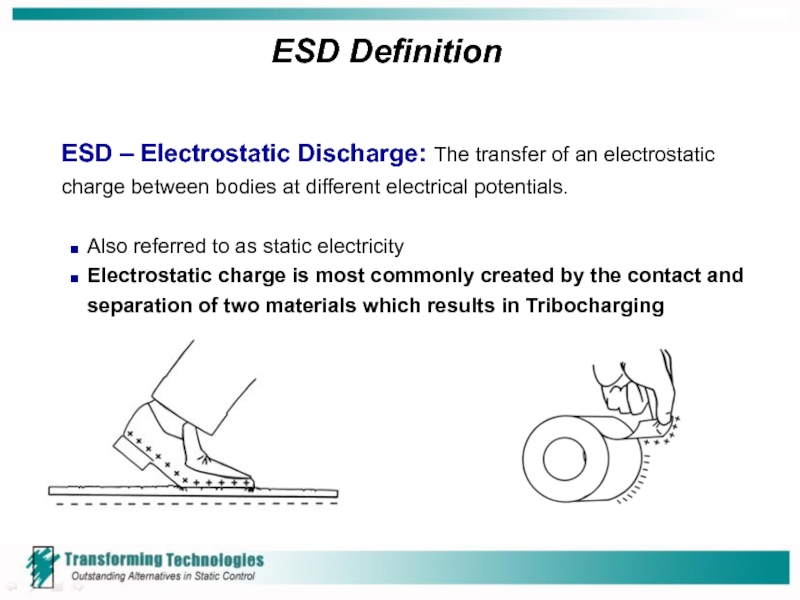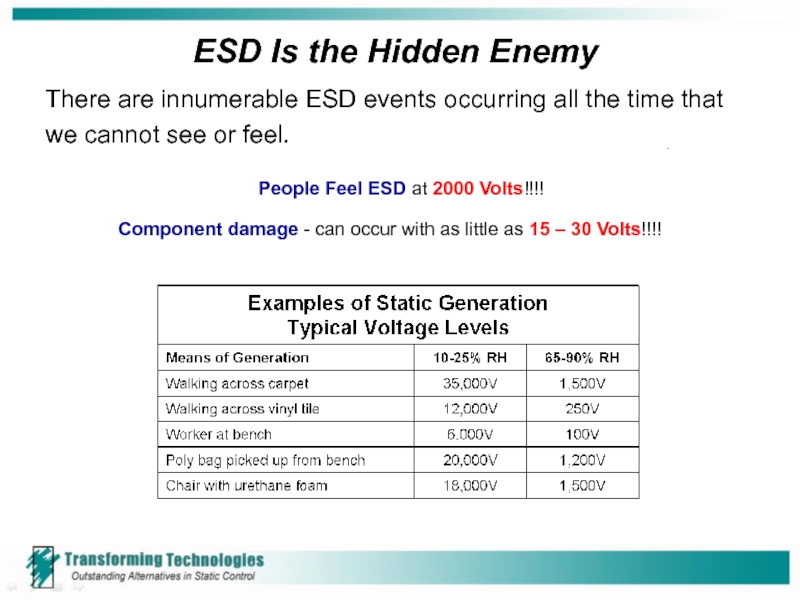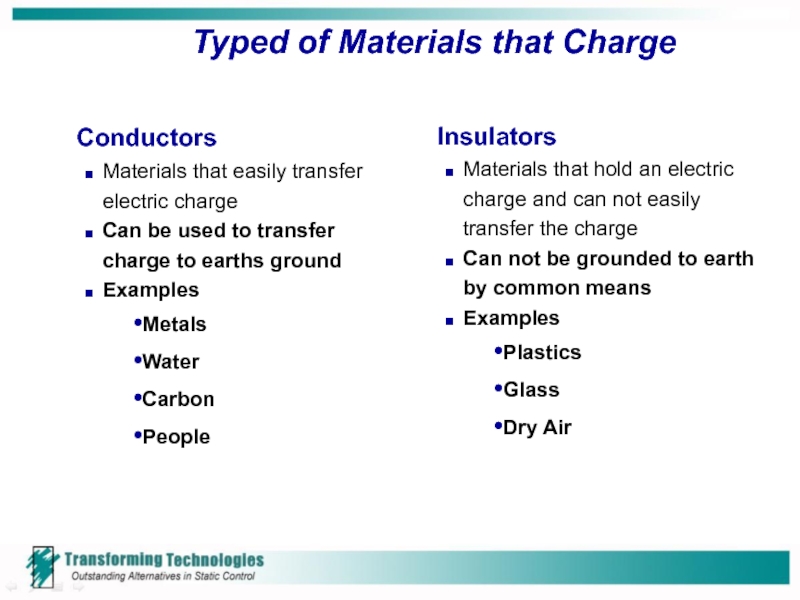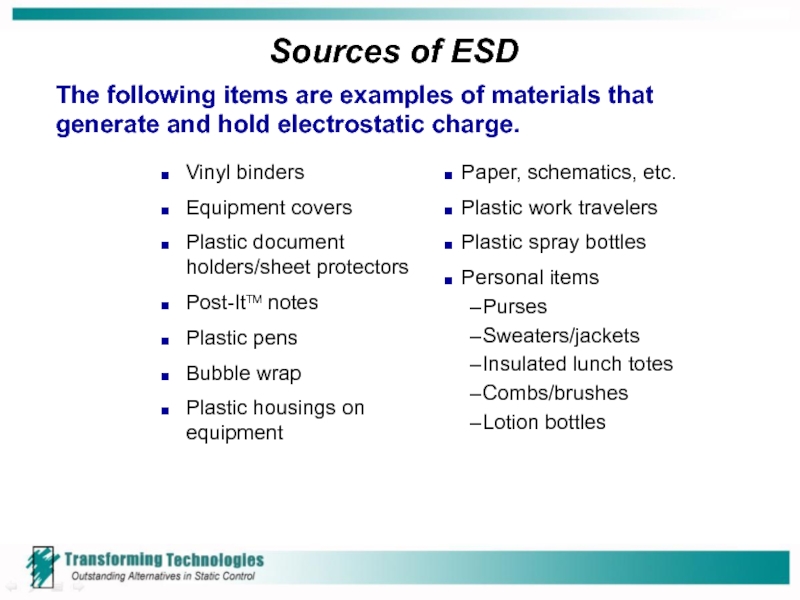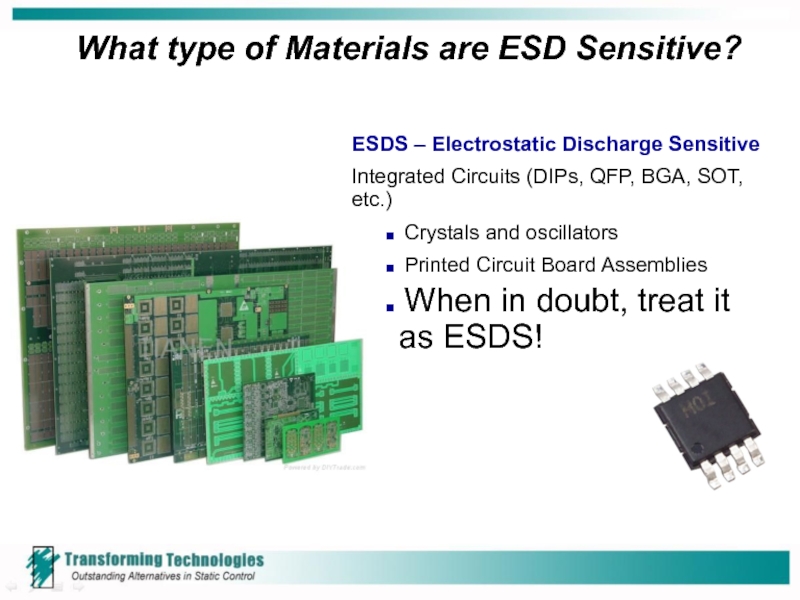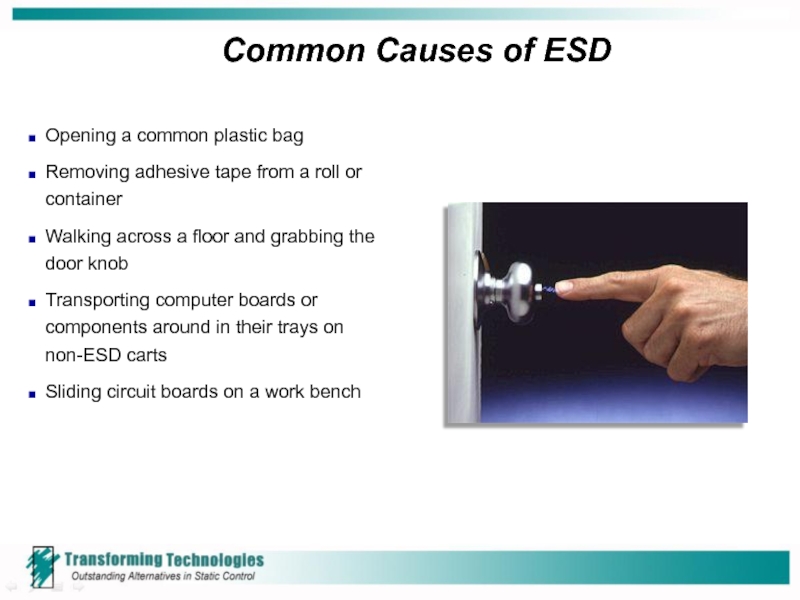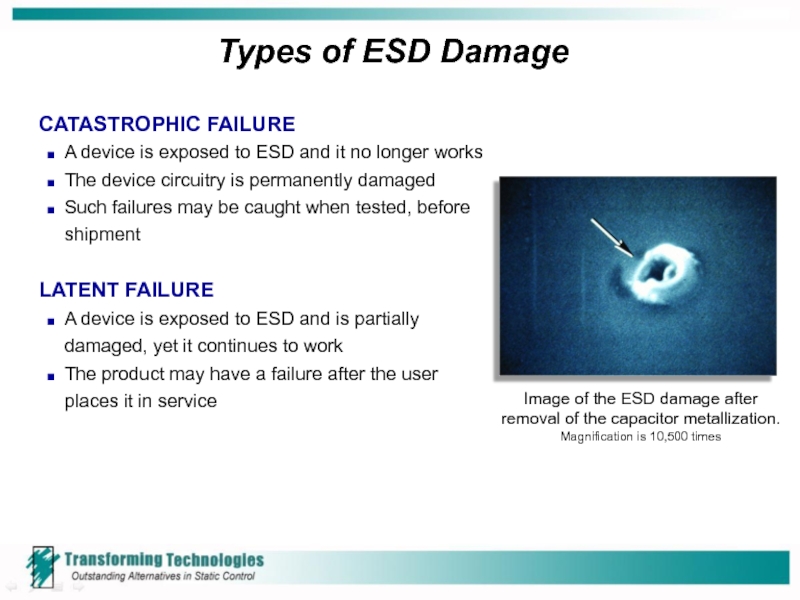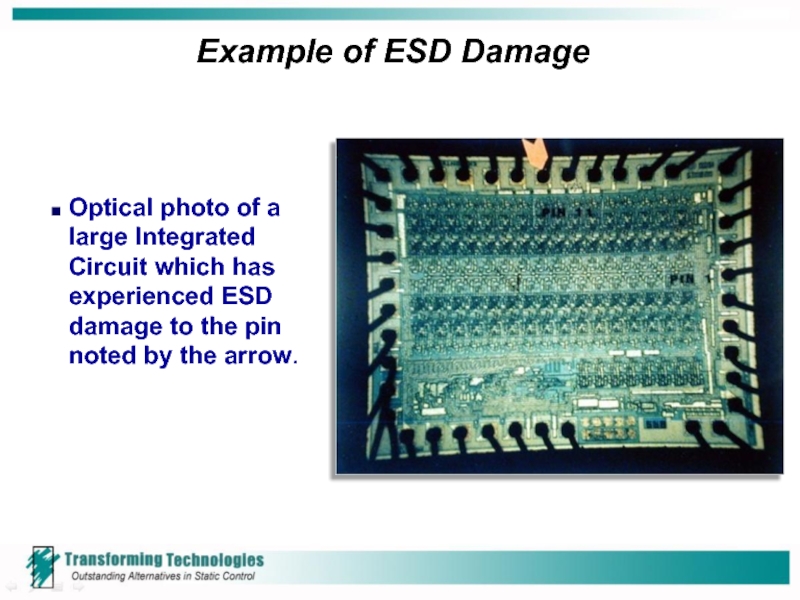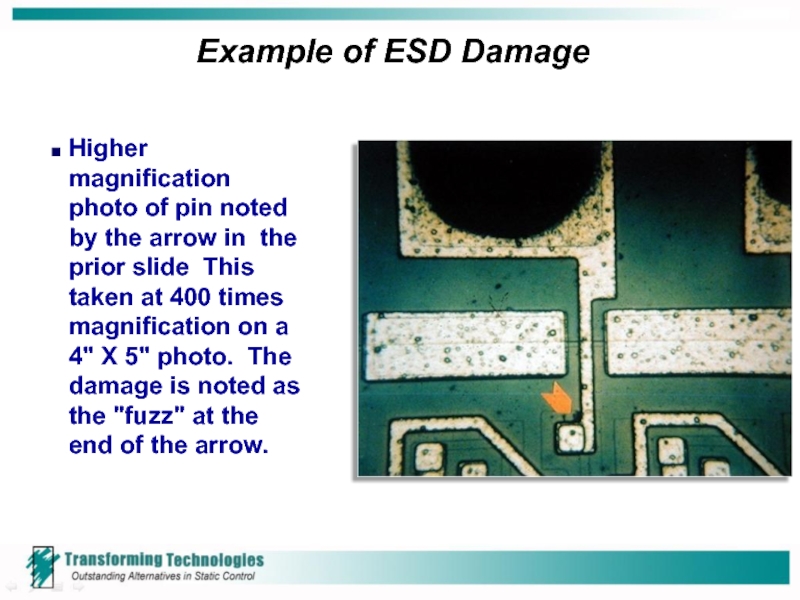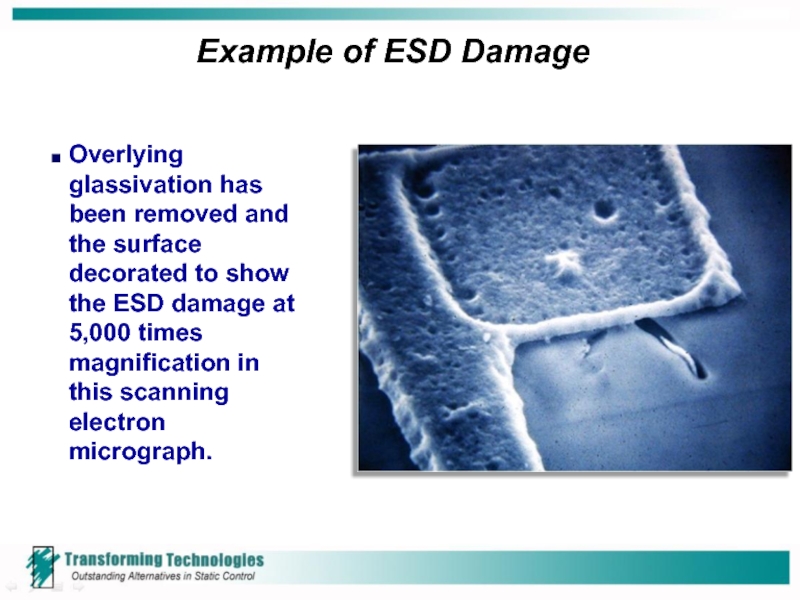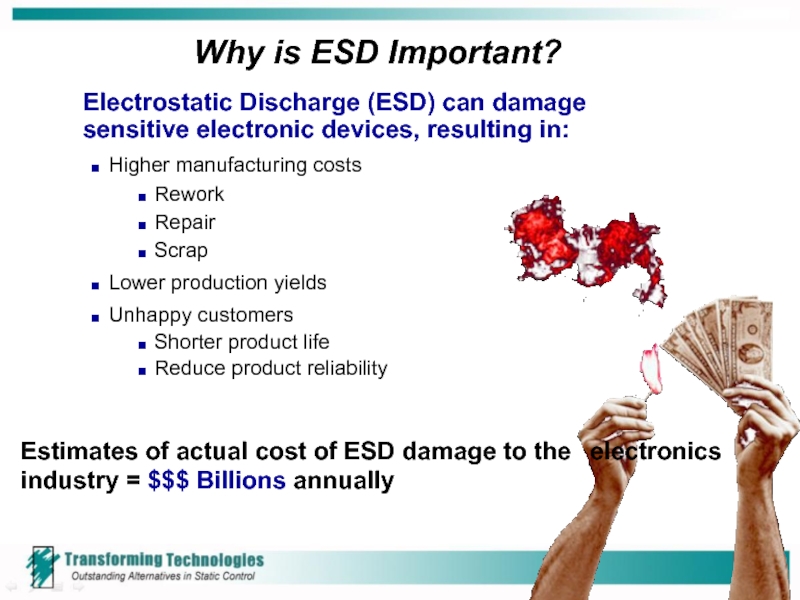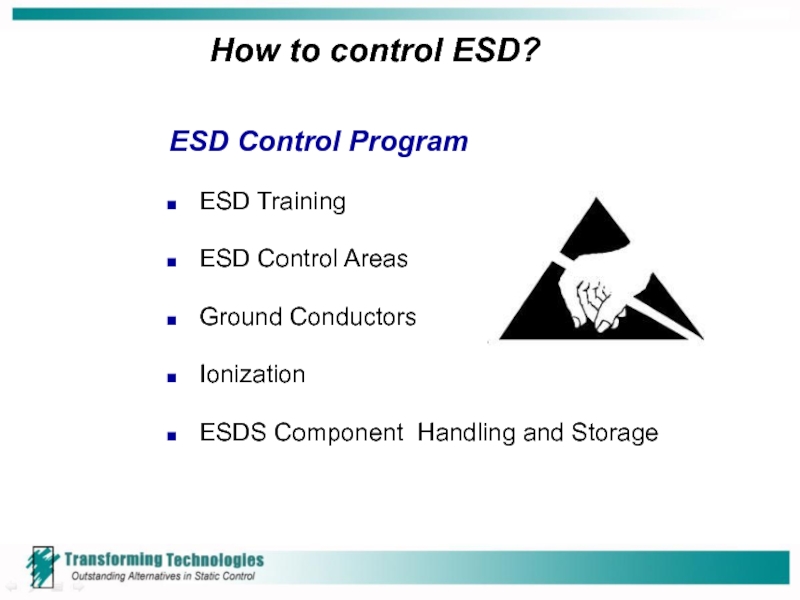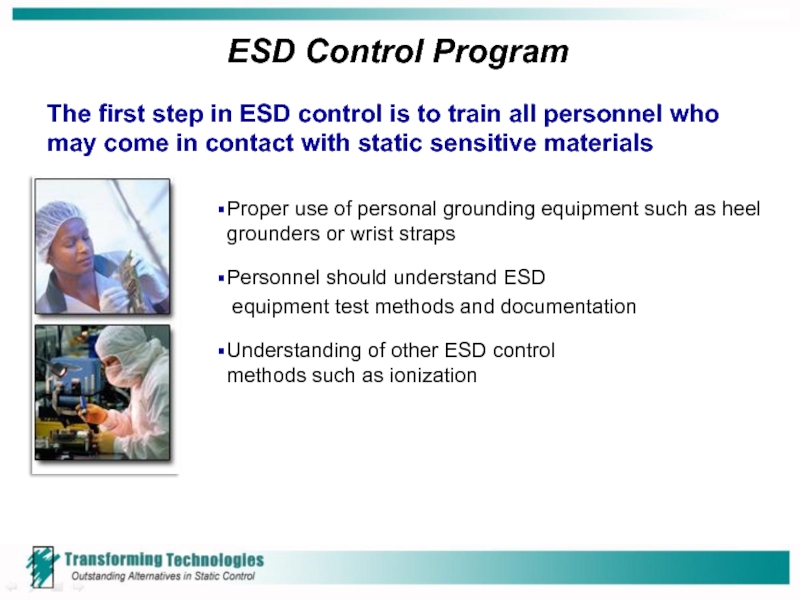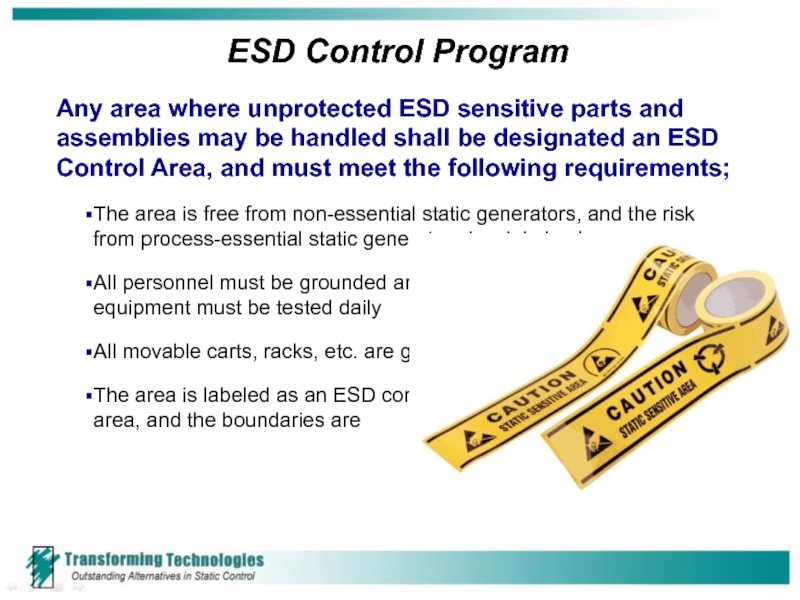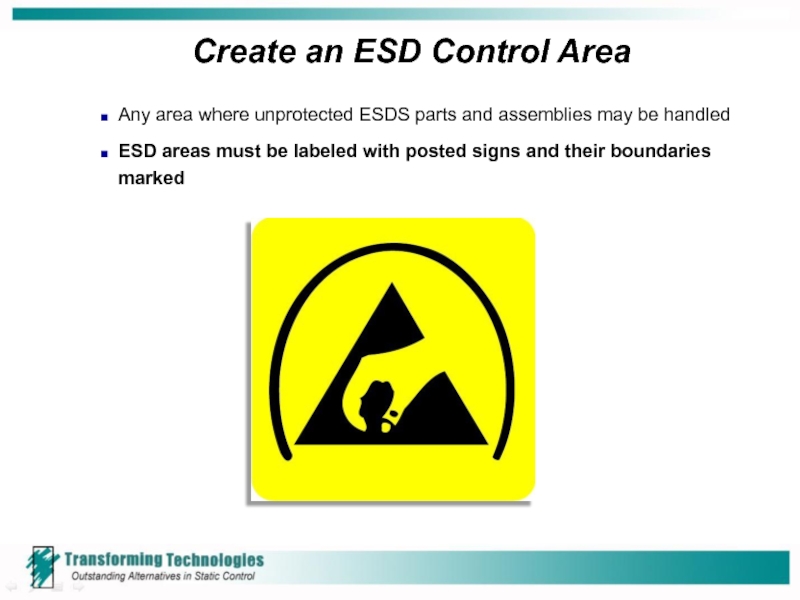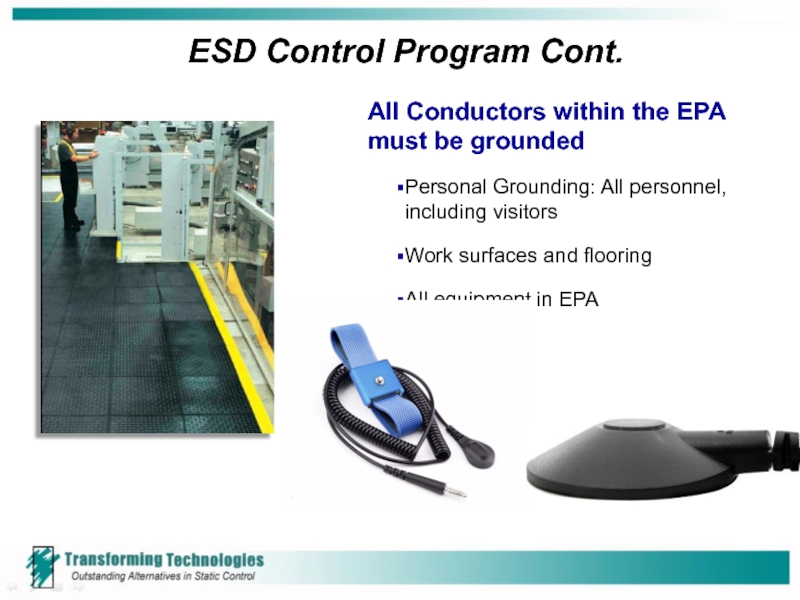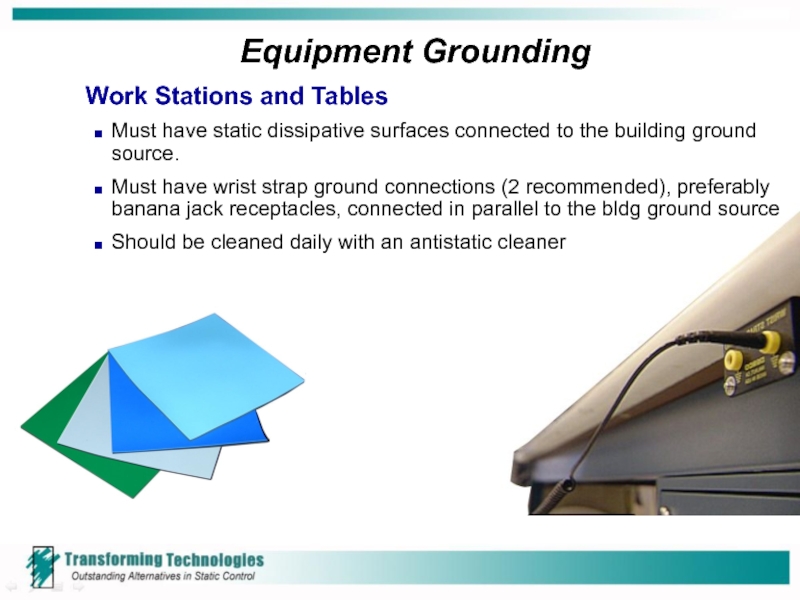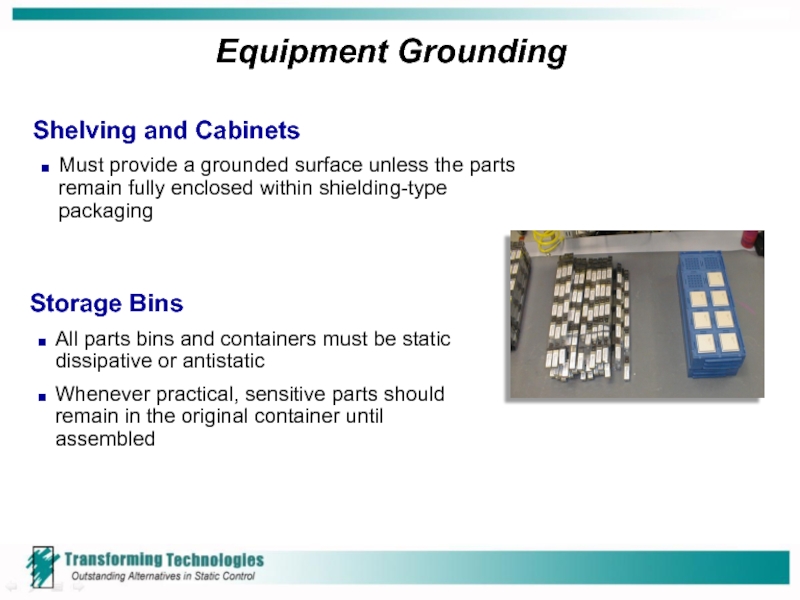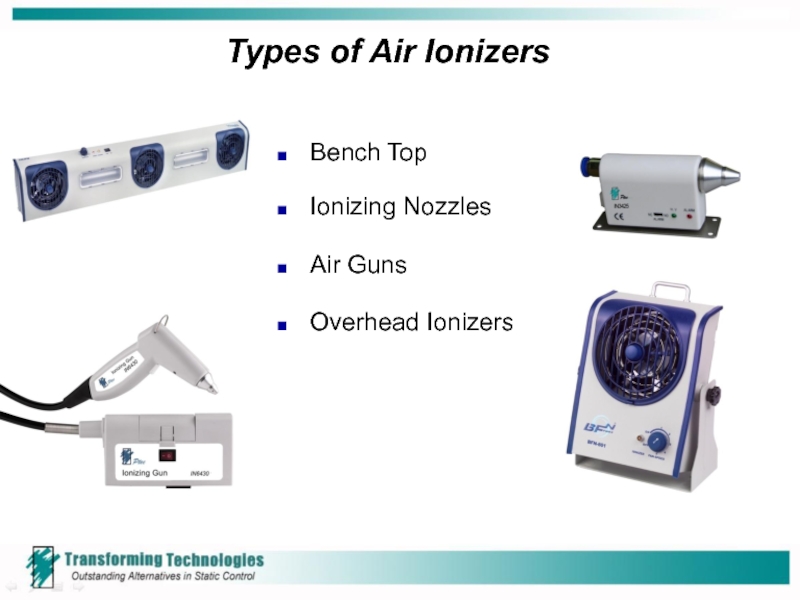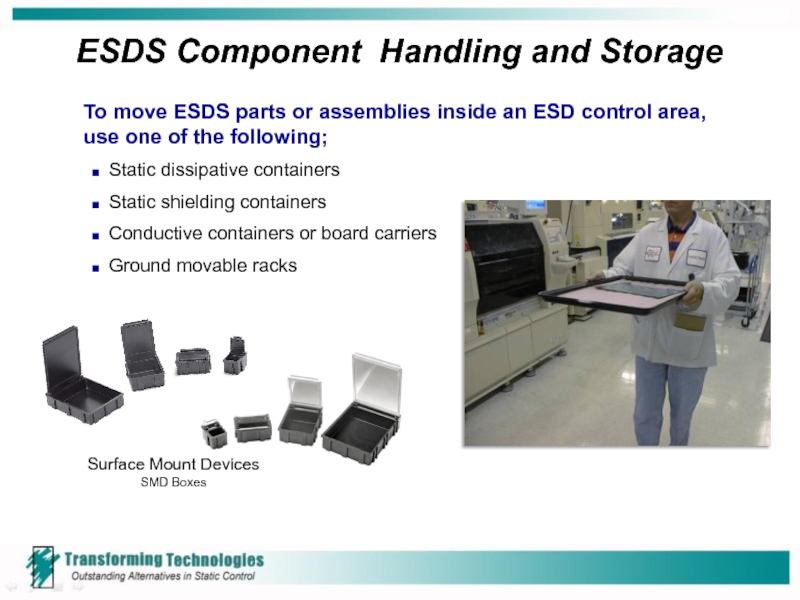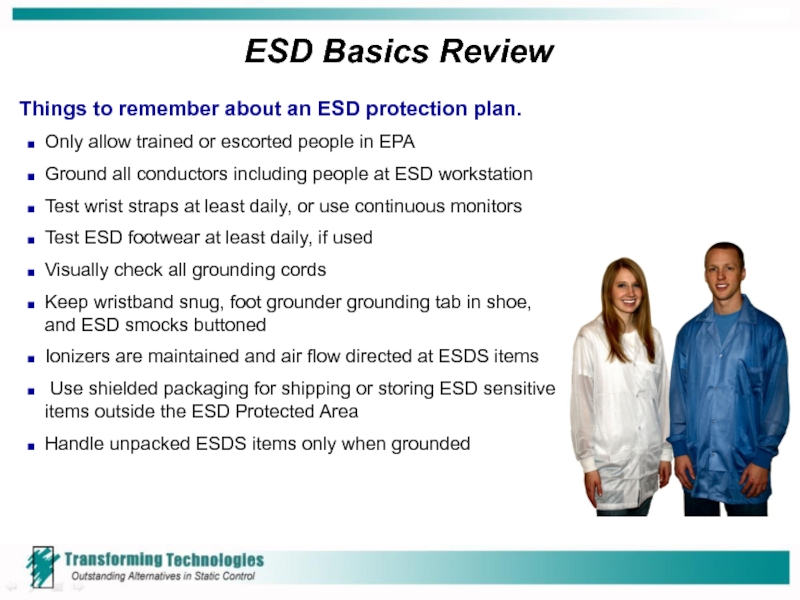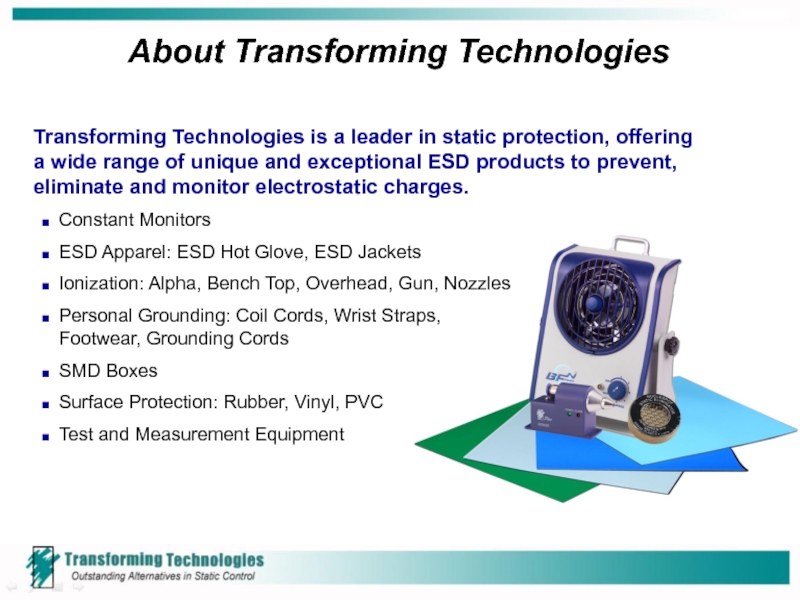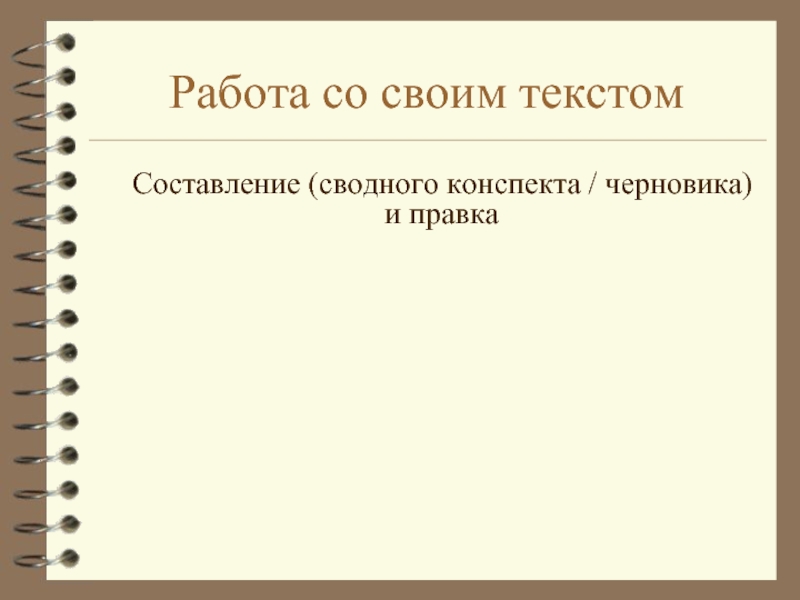- Главная
- Разное
- Дизайн
- Бизнес и предпринимательство
- Аналитика
- Образование
- Развлечения
- Красота и здоровье
- Финансы
- Государство
- Путешествия
- Спорт
- Недвижимость
- Армия
- Графика
- Культурология
- Еда и кулинария
- Лингвистика
- Английский язык
- Астрономия
- Алгебра
- Биология
- География
- Детские презентации
- Информатика
- История
- Литература
- Маркетинг
- Математика
- Медицина
- Менеджмент
- Музыка
- МХК
- Немецкий язык
- ОБЖ
- Обществознание
- Окружающий мир
- Педагогика
- Русский язык
- Технология
- Физика
- Философия
- Химия
- Шаблоны, картинки для презентаций
- Экология
- Экономика
- Юриспруденция
Electrostatic discharge basics by transforming technologies презентация
Содержание
- 1. Electrostatic discharge basics by transforming technologies
- 2. About Transforming Technologies Transforming Technologies is a
- 3. ESD definition Common causes of
- 4. ESD Definition ESD – Electrostatic Discharge: The
- 5. ESD Is the Hidden Enemy There are
- 6. Typed of Materials that Charge Conductors Materials
- 7. Sources of ESD Vinyl binders Equipment covers
- 8. What type of Materials are ESD Sensitive?
- 9. Common Causes of ESD Opening a common
- 10. Types of ESD Damage CATASTROPHIC FAILURE A
- 11. Example of ESD Damage Optical photo of
- 12. Example of ESD Damage Higher magnification photo
- 13. Example of ESD Damage Overlying glassivation has
- 14. Why is ESD Important? Electrostatic Discharge (ESD)
- 15. How to control ESD? ESD Training ESD
- 16. ESD Control Program Proper use of
- 17. ESD Control Program Any area where unprotected
- 18. Create an ESD Control Area Any area
- 19. ESD Control Program Cont. All Conductors within
- 20. Personal Grounding Wrist Straps and Coil
- 21. Personal Grounding All Personal Grounding Equipment
- 22. Equipment Grounding Work Stations and Tables Must
- 23. Equipment Grounding Shelving and Cabinets Must provide
- 24. Ionization Many times, equipment or objects(insulators)
- 25. Types of Air Ionizers Bench Top
- 26. ESDS Component Handling and Storage To move
- 27. ESD Basics Review Things to remember
- 28. About Transforming Technologies Transforming Technologies is a
Слайд 2About Transforming Technologies
Transforming Technologies is a leading solution provider for static
Headquartered in Toledo, OH, USA, Transforming Technologies we offer a wide range of unique and exceptional ESD products to prevent, eliminate an monitor electrostatic charges.
We provide comprehensive knowledge of electrostatic issues, and above all outstanding, friendly service. We call it Static Care™.
Слайд 3 ESD definition
Common causes of ESD
Sources of ESD
Types
What is ESD?
Photo of ESD arcing from finger to component
Слайд 4ESD Definition
ESD – Electrostatic Discharge: The transfer of an electrostatic charge
Also referred to as static electricity
Electrostatic charge is most commonly created by the contact and separation of two materials which results in Tribocharging
Слайд 5ESD Is the Hidden Enemy
There are innumerable ESD events occurring all
Component damage - can occur with as little as 15 – 30 Volts!!!!
People Feel ESD at 2000 Volts!!!!
Слайд 6Typed of Materials that Charge
Conductors
Materials that easily transfer electric charge
Can be
Examples
Metals
Water
Carbon
People
Insulators
Materials that hold an electric charge and can not easily transfer the charge
Can not be grounded to earth by common means
Examples
Plastics
Glass
Dry Air
Слайд 7Sources of ESD
Vinyl binders
Equipment covers
Plastic document holders/sheet protectors
Post-ItTM notes
Plastic pens
Bubble wrap
Plastic
Paper, schematics, etc.
Plastic work travelers
Plastic spray bottles
Personal items
Purses
Sweaters/jackets
Insulated lunch totes
Combs/brushes
Lotion bottles
The following items are examples of materials that generate and hold electrostatic charge.
Слайд 8What type of Materials are ESD Sensitive?
ESDS – Electrostatic Discharge Sensitive
Integrated
Crystals and oscillators
Printed Circuit Board Assemblies
When in doubt, treat it as ESDS!
Слайд 9Common Causes of ESD
Opening a common plastic bag
Removing adhesive tape from
Walking across a floor and grabbing the door knob
Transporting computer boards or components around in their trays on non-ESD carts
Sliding circuit boards on a work bench
Слайд 10Types of ESD Damage
CATASTROPHIC FAILURE
A device is exposed to ESD and
The device circuitry is permanently damaged
Such failures may be caught when tested, before shipment
LATENT FAILURE
A device is exposed to ESD and is partially damaged, yet it continues to work
The product may have a failure after the user places it in service
Image of the ESD damage after removal of the capacitor metallization.
Magnification is 10,500 times
Слайд 11Example of ESD Damage
Optical photo of a large Integrated Circuit which
Слайд 12Example of ESD Damage
Higher magnification photo of pin noted by the
Слайд 13Example of ESD Damage
Overlying glassivation has been removed and the surface
Слайд 14Why is ESD Important?
Electrostatic Discharge (ESD) can damage sensitive electronic devices,
Higher manufacturing costs
Rework
Repair
Scrap
Lower production yields
Unhappy customers
Shorter product life
Reduce product reliability
Estimates of actual cost of ESD damage to the electronics industry = $$$ Billions annually
Слайд 15How to control ESD?
ESD Training
ESD Control Areas
Ground Conductors
Ionization
ESDS Component Handling
ESD Control Program
Слайд 16ESD Control Program
Proper use of personal grounding equipment such as heel
Personnel should understand ESD
equipment test methods and documentation
Understanding of other ESD control methods such as ionization
The first step in ESD control is to train all personnel who may come in contact with static sensitive materials
Слайд 17ESD Control Program
Any area where unprotected ESD sensitive parts and assemblies
The area is free from non-essential static generators, and the risk from process-essential static generators is minimized
All personnel must be grounded and grounding equipment must be tested daily
All movable carts, racks, etc. are grounded
The area is labeled as an ESD control area, and the boundaries are clearly marked
Слайд 18Create an ESD Control Area
Any area where unprotected ESDS parts and
ESD areas must be labeled with posted signs and their boundaries marked
Слайд 19ESD Control Program Cont.
All Conductors within the EPA must be grounded
Personal Grounding: All personnel, including visitors
Work surfaces and flooring
All equipment in EPA
Слайд 20Personal Grounding
Wrist Straps and Coil Cords
Wrist Straps ground personnel at workstations
Heel
Ground mobile personnel in areas where there are ESD floors
Smocks
Smock sleeves should be in contact with the skin, clothing underneath should not show
Слайд 21Personal Grounding
All Personal Grounding Equipment Should be Tested or Monitored Daily
Wrist
ESD ground monitoring
Constant
Impedance
OHM Metrics and Monroe Electronics
Test and Measurement Products
CM Series
ESD Workstation Monitors
Слайд 22Equipment Grounding
Work Stations and Tables
Must have static dissipative surfaces connected to
Must have wrist strap ground connections (2 recommended), preferably banana jack receptacles, connected in parallel to the bldg ground source
Should be cleaned daily with an antistatic cleaner
Слайд 23Equipment Grounding
Shelving and Cabinets
Must provide a grounded surface unless the parts
Storage Bins
All parts bins and containers must be static dissipative or antistatic
Whenever practical, sensitive parts should remain in the original container until assembled
Слайд 24Ionization
Many times, equipment or objects(insulators) are unable to be grounded
What is Ionization?
Air Ionizers use a process called "neutralization" to remove static charge from insulators that cannot be grounded.
Ionizers produce positively and negatively charged ions and floods ESD area with Ions.
Ions are charged particles that are present in the air, and as opposites attract, charges will be neutralized over time.
Слайд 26ESDS Component Handling and Storage
To move ESDS parts or assemblies inside
Static dissipative containers
Static shielding containers
Conductive containers or board carriers
Ground movable racks
Surface Mount Devices
SMD Boxes
Слайд 27ESD Basics Review
Things to remember about an ESD protection plan.
Only
Ground all conductors including people at ESD workstation
Test wrist straps at least daily, or use continuous monitors
Test ESD footwear at least daily, if used
Visually check all grounding cords
Keep wristband snug, foot grounder grounding tab in shoe, and ESD smocks buttoned
Ionizers are maintained and air flow directed at ESDS items
Use shielded packaging for shipping or storing ESD sensitive items outside the ESD Protected Area
Handle unpacked ESDS items only when grounded
Слайд 28About Transforming Technologies
Transforming Technologies is a leader in static protection, offering
Constant Monitors
ESD Apparel: ESD Hot Glove, ESD Jackets
Ionization: Alpha, Bench Top, Overhead, Gun, Nozzles
Personal Grounding: Coil Cords, Wrist Straps, Footwear, Grounding Cords
SMD Boxes
Surface Protection: Rubber, Vinyl, PVC
Test and Measurement Equipment
